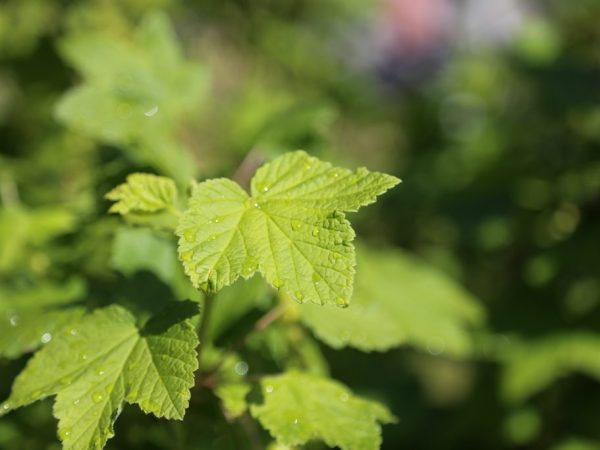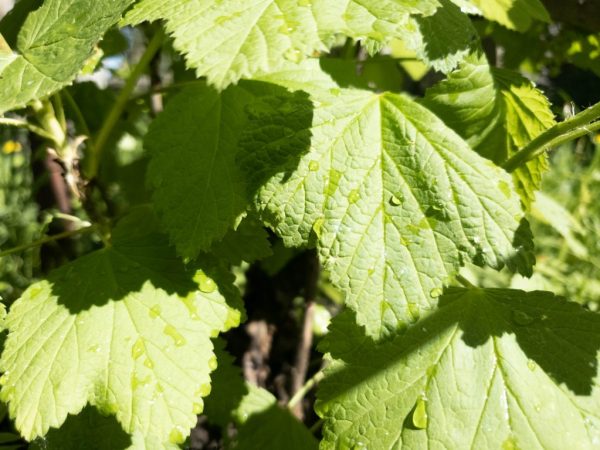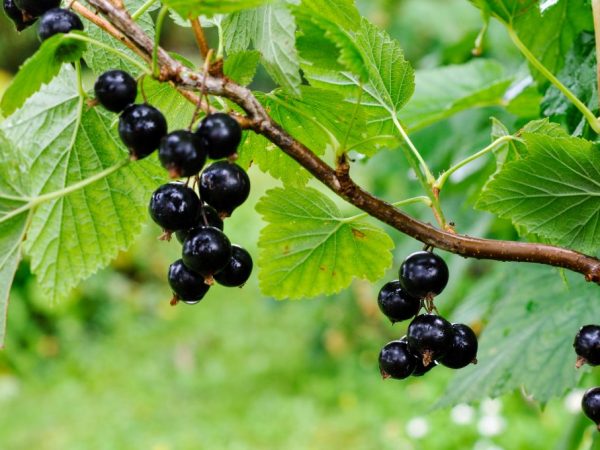Currant care - important autumn procedures
Despite the unpretentiousness of the currant, in the fall it needs careful care. If you neglect certain subtleties in growing a crop, with each season its yield will noticeably decrease and, as a result, it will completely disappear, the bush itself will have to be replaced with a new one.

Currant care - important autumn procedures
The importance of autumn procedures
It is important to prepare the currants for the winter cold - this is the key to abundant fruiting next year.
Mandatory procedures include water charging, fertilizing, pest control and pruning.
Watering
Regardless of climate changes, even in the presence of rare rains in the fall, water-charging irrigation should not be neglected - the bush does not tolerate drought well.
The root system needs to fully stock up on liquid for the wintering period. It is better to hold the event during the period of root growth (at the end of September).
The amount of moisture consumed by a plant directly depends on its age. On average, one bush leaves from 3 to 6 buckets. The substrate must be soaked at least 50 cm deep.
After the near-stem space is mulched to a diameter of 60 cm. Agrofibre, small branches, shavings, sawdust or dry leaves are used as material. The recommended layer thickness is 5-10 cm.
Charging watering makes it possible to:
- create a reservoir of fluid for the spring;
- ensure active growth of the root system;
- saturate the soil with the required amount of moisture;
- maintain the stability and structure of the substrate;
- protect the underground part from excessive freezing;
- to minimize the risk of soil thawing under the condition of winter thaws.
The disadvantages include the exposure of the root system after abundant watering, which should be paid attention to in order to avoid the death of the plant at sub-zero temperatures.
They solve the problem by pouring soil into the near-stem space, which is then slightly tamped. Some summer residents supplement the land with wood ash.
Pruning
Autumn pruning is carried out in order to form a neat crown for the next season, increase productivity and increase the duration of fruiting.
The procedure is the cleaning of bush trunks from all that is superfluous. It prevents pests from storing during the winter.
In the process, all damaged and dry branches are removed, as well as those located on the surface of the earth. Additionally, the inner part of the crown is thinned out.
The timing depends on the variety: black is cut immediately after harvest, red or white only during the dormant period.
It is forbidden to carry out the procedure with your hands; a garden saw or pruner is suitable for this. Previously, the tools are disinfected with medical alcohol or a solution of potassium permanganate, which prevents the spread of diseases from one bush to another.
During pruning, you must adhere to several rules:
- do not leave hemp;
- make a cut 1-1.5 cm above the kidneys.
The first correction is recommended for the 5th year of the plant's life. For a faster recovery, it is allowed to feed with potassium-phosphorus fertilizer.
The formation of young bushes is slightly different from the pruning of mature ones. To begin with, all but 4 of the skeletal branches are cut off from the seedling so that they have 3 leaf buds. Additionally, the processes knocking out to the side are removed.
As a result, after the procedure, no more than 20 shoots growing from the soil should be preserved. Otherwise, the plant will be too overwhelmed and will not bring a high-quality harvest.
Top dressing

It is important to correctly calculate the amount of fertilizer
During the growing season, currants almost completely exhaust their potential and especially needs additional nutrients, including phosphorus and potassium. Their reserves not only need to be replenished, but also to create a reservoir for the entire subsequent hibernation period.
Preparations with a high nitrogen content should be used very carefully, use is allowed only if the berries were harvested in the middle of summer.
To fertilize the soil, use:
- Superphosphate, potassium sulfate. They are considered to be long-playing. The overall growth of the bush is not affected. They are responsible for the quantity and taste of the fruit. Presented in the form of granules with a concentrated composition.
- Ash. It can also be used for mulching due to its good moisture retention capacity.
- Organic matter (plant compost, humus, mullein, chicken droppings). Designed for growing green mass by a bush. They are distributed over the soil surface in the area of the trunks before the onset of frost. Subsequently, the substances are converted into simpler elements and are gradually absorbed into the substrate.
Fertilizers must be applied correctly, with the wrong approach, the bush can be harmed.
There are a number of subtleties that must be observed:
- Feeding too early is prohibited. Additional stimulation contributes to a faster movement of the juice, as a result of which the currants will not withstand the "blow" of frost.
- In the case of purchased drugs, one should not deviate from the norm recommended on the package. An overabundance of nutrients is the reason for the stagnation of development, as a result, there will be no shift from the point of growth at the beginning of the growing season.
- It is impossible to use concentrated manure due to the high level of nitrogenous compounds in the composition. The use of pure fertilizer provokes the occurrence of burns of the root system, which will entail the complete destruction of the green mass. A safe option is to apply organics diluted with water at a distance of 25 cm from the trunk.
Treatment against diseases and pests
For prophylaxis in the fall, complex agents (fungicides) are used, which do not affect exclusively the focus of inflammation, but penetrate into the trunk.
Drugs such as the following have proven to be good for controlling insects and preventing ailments:
- Aktara;
- Speed;
- Bordeaux liquid (recommended concentration 1%);
- Fitoverm;
- Fitosporin;
- Topaz.
Spray the culture at a temperature of 20 °. In cool weather, shrubs should be wrapped in plastic. A later procedure jeopardizes the entire plant.
If the currant is affected by a tick, which in the fall is located in the buds, and after winter, with their disclosure, it comes out with new offspring, a similar problem can be solved by spraying the green mass with a solution of Karbofos at a concentration of 0.2% or 2% Nitrofen.
The next one is carried out after 10 days, as well as after flowering using colloidal sulfur (1%). The use of tincture of garlic or tobacco is also allowed.
Many experienced gardeners deal with pests by using an adjunct treatment of the trunk circle, which is done exclusively after pruning and disposing of debris. As a disinfectant solution, mainly copper sulfate and potassium permanganate are used, sometimes water with laundry soap.

Proper preparation for winter affects plant health
Digging the soil under the bush allows you to get rid of those larvae that are hidden underground. These include the beetle, glass, sawfly. Dig up the substrate carefully, trying not to injure the root system to a depth of no more than 15-20 cm.
Terms of preparation for winter
Preparation of currants for winter depends on the territorial location of the garden.
In different regions, temperature indicators and natural conditions fluctuate noticeably, which should be taken into account when choosing a date for agrotechnical work.
In outskirts of Moscow
Considering that the air temperature in winter rarely drops to -15 °, there is no need to cover frost-resistant varieties, because they are able to comfortably tolerate indicators at -30 °.
In the case of cultivation of imported varieties that are not adapted to the climate of Russia, it is required to additionally insulate the plant and bend it to the ground. This must be done before the first significant frost.
In the Urals
The nature of the Urals is characterized by a harsh climate ..
In the case of a forecast of a winter with little snow, it is necessary to bend the currants to the ground and take care of insulation and the construction of a snow-holding device.
In order to avoid freezing of the root system, it is required to mulch the peri-stem space. The optimal time for carrying out work is the end of leaf fall before the onset of sub-zero temperatures.
In Siberia
If the hydrometeorological center promises little rainfall during the winter and the bush is located on an open area, the culture is bent down, insulated, mulched.
Provided there is abundant snow, it is enough to cover the near-stem circle with a layer of sawdust and lower the branches to the ground.
In the Leningrad region
Due to mild winters with a large amount of rainfall and high humidity in this area, preparation for winter comes down to processing currants from insects and high-quality pruning.
Events should be held before the second half of September.
Preparation rules
Depending on the variety of currants, caring for shrubs in the fall may differ slightly.
Black currant
Requires not only sanitary, but also basic pruning. First of all, old branches that have reached 5 years are removed. They are determined by the diameter and dark color of the wood.
Additionally, all shoots are shortened by ⅓ of the length in order to stimulate active branching. After the procedure, about 8 skeletal branches should remain on the bush.
Also, black currant responds well to moisture-charging pre-winter watering.
Red and white currants
Formative correction has a number of differences: older segments, which have reached 7-9 years old, are pruned.
With sanitary shortening, it should be borne in mind that the variety is characterized by the formation of fruits at the tops, therefore, a strong excision will lead to a decrease in yield. The optimal number of preserved shoots is 10-12.
Summing up
Caring for currants in the fall is not particularly difficult. If all the norms of agrotechnical measures are fulfilled, the culture will fully thank you next season with large and tasty berries.

